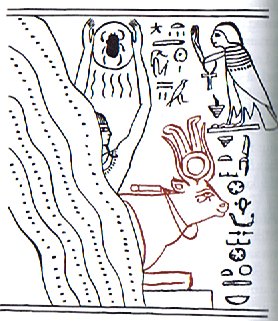Questions remain. We should notice the
very special pair of
glyphs at the end of
line Cb2:
|
Pleione 1 (15) |
2 |
3 |
|
May 31 (151) |
June 1 |
2 |
 |
 |
 |
|
Cb2-21 |
Cb2-22 |
Cb2-23 |
|
kua
tapu - no te manu |
ku kikiu - i te henua |
koia ra |
|
no stars listed |
|
December 1 |
2
(336) |
3 |
|
Az
Zubana 3 |
4 (200) |
5 |
|
Denebakrab (254.7),
ι Ophiuchi (255.3), Grafias (255.4) |
κ Ophiuchi (256.2) |
Cujam (256.9) |
|
Pleione 4 |
5 (19) |
|
June 3 |
4 (155) |
 |
 |
|
Cb2-24 |
Cb2-25 |
|
tagata tua ivi - te henua |
tagata tua ivi - ki te henua |
|
Hassaleh (73.6) |
Almaaz (74.7), Haedus I (74.8) |
|
December 4 |
5 |
|
Az Zubana 6 |
7 |
|
no star
listed |
17h (258.7) |
|
no star
listed |
Tua
means the back side and the sitting figures indeed have strange
backs. Ivi means bone. Together with tua it
becomes 'shoulder blade', 'spine', etc., neither of which,
however, agrees very well with what we can see in these glyhphs.
|
Tua 1.
Back, shoulder, tu'a ivi,
shoulder blade; tu'a ivi more,
lumbago; moa tu'a ivi raá,
'sun-back chicken': chicken with a
yellow back which shines in the sun.
2. Behind (a locative adverb, used
with i, ki, a, o, etc).
Tu'a-papa, pelvis, hips. Vanaga.
1. Behind, back,
rear; ki tua, after; o tua,
younger; taki tua, perineum.
2. Sea urchin, echinus. The word
must have a germ sense indicating
something spinous which will be
satisfactorily descriptive of the
sea urchin all spines, the prawn
with antennae and thin long legs,
and in the Maori the shell of
Mesodesma spissa. Tuaapapa,
haunch, hip, spine. Tuahaigoigo,
tattooing on the back. Tuahuri,
abortion; poki tuahuri,
abortive child. Tuaivi,
spine, vertebræ,
back, loins; mate mai te
tuaivi,
ill at ease. Tuakana,
elder, elder brother;
tuakana tamaahina,
elder sister. Tuamouga,
mountain summit. Tuatua,
to glean. Mgv. tua: To
fell, to cut down. Ta.: tua,
to cut. Mq.: tua, to fell, to
cut down. Ma.: tua, id.
Tuaki, to disembowel. Ma.:
tuaki, to clean fish. Tuavera,
the last breadfruit spoiled by the
wind. Ta.: tuavera, burnt by
the sun. Churchill. |
|
Ivi 1.
Bone; fishbone. 2. Ivi-tia,
sewing needle. 3. Ivi tika,
spine, vertebra. 4. Ivi atua,
being of the other world. 5. Ivi
tumu atua, seer, wizard. 6.
Ivi heheu swordfish. Vanaga.
1. Bone, needle;
ivi ika, fishbone; ivi
ohio, needle; ivi tika,
fishbone, backbone; kiko o te ivi
tika, pancreas; ivi heheu,
cachalot; ivi tupapaku,
skeleton; ivi uha, to grow
(of mankind); tooa te kiko e ivi
i hakarere, to strip the flesh
from the bones; kai ivi, to
eat remnants; kore te ivi,
cooked too much. 2. Parent, family,
ancestry. Churchill. |
Maybe
they are dung beetles with their hard wing covers outspread
ready to fly.

The creature in Cb2-24
has no arms (rima),
which possibly was
necessary in order to
visualize the space
before (vaha rima)
Rigel would rise with
the Sun.
|
Vaha
Hollow; opening; space between the
fingers (vaha rima); door
cracks (vaha papare).
Vahavaha, to fight, to wrangle,
to argue with abusive words. Vanaga.
1. Space, before
T; vaha takitua, perineum. PS
Mgv.: vaha, a space, an open
place. Mq.: vaha, separated,
not joined. Ta.: vaha, an
opening. Sa.: vasa, space,
interval. To.: vaha, vahaa,
id. Fu.: vasa, vāsaà,
id. Niuē: vahā.
2. Muscle, tendon;
vahavaha,
id. Vahahora
(vaha
1 - hora
2), spring. Vahatoga
(vaha
1 - toga
1), autumn. 3. Ta.:
vahavaha,
to disdain, to dislike. Ha.:
wahawaha,
to hate, to dislike.
Churchill. |
The creature in Cb2-25,
with her arms and legs
forming a key-hole
opening, could represent
Moon. Instead of a pair
of frontal mata
she has a pair of
frontal half-crescents.
The thin long henua
in front could possibly indicate
8 lunar months following
after 5 months
from January 3 -
visualized in Cb2-24 by
a short fat henua
(when people were well
fed).
Perhaps Cb2-24
corresponds to the
season when the normal
Moon calendar was put
aside while Cb2-25
would represent the following
normal months ruled by
Moon. On Easter Island
winter solstice was in
June and this month
began when Rigel rose
heliacally.
Nowhere else did Metoro
use the word ivi.
|





